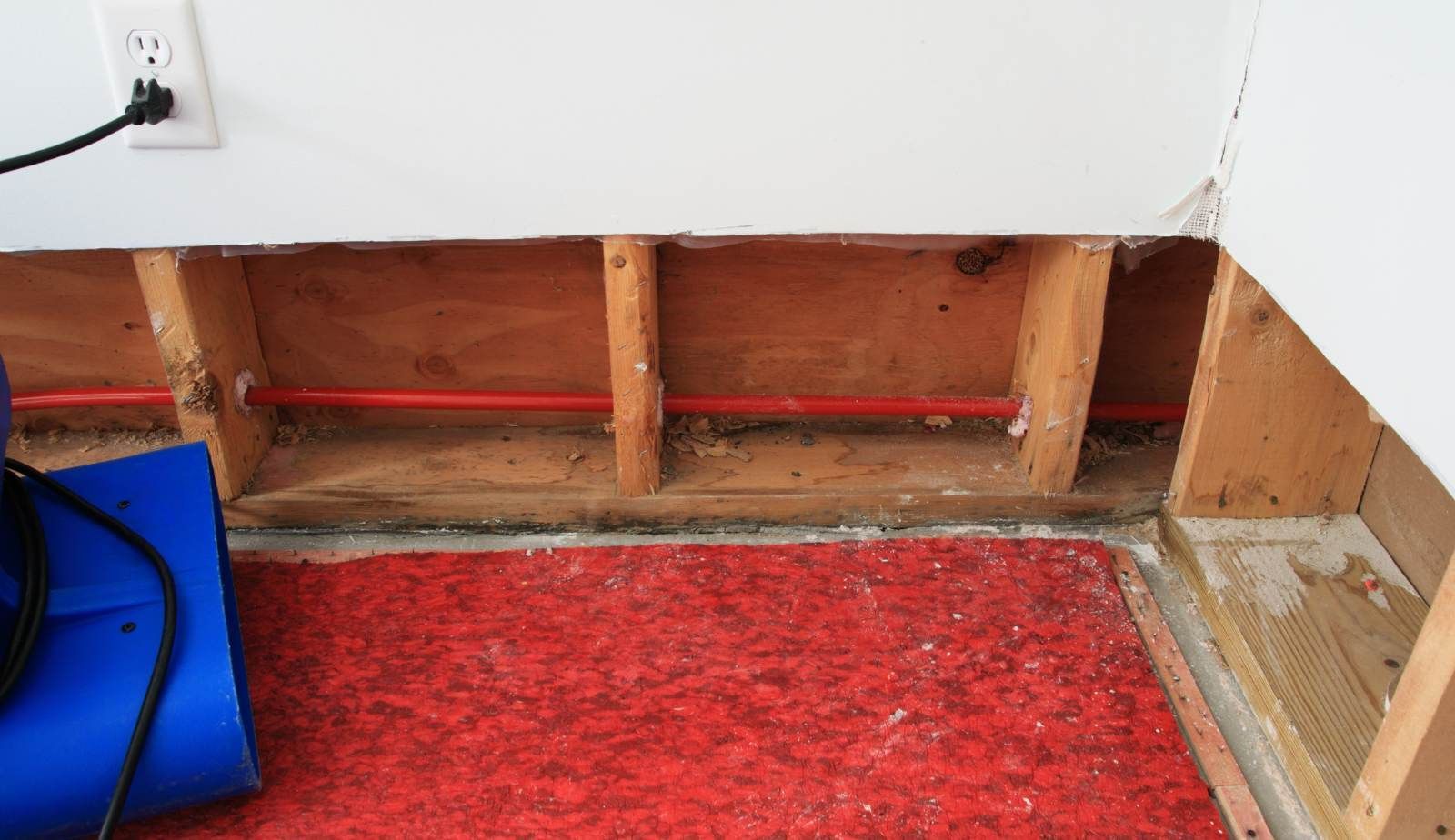DryMax Restoration's Expert Tips

A flooded crawl space in Baton Rouge can quickly become a serious problem, threatening the structural integrity of a home and creating an environment for mold and mildew growth. Drymax emphasizes the importance of acting swiftly to remove standing water and dry the area thoroughly to prevent lasting damage. Drymax advises homeowners to use professional water extraction services combined with powerful drying equipment, like dehumidifiers and fans, to ensure the crawl space is completely moisture-free. Regular maintenance and proper water management around the foundation can also reduce the risk of future flooding. Understanding the risks and following expert guidance can help homeowners protect their property effectively. Drymax’s experience and rapid response in Louisiana make them a reliable resource for managing crawl space flooding with proven restoration methods. Immediate Actions for a Flooded Baton Rouge Crawl Space Prompt and careful steps are essential to mitigate damage when a crawl space floods. Prioritizing safety, accurately evaluating the situation, and starting water removal quickly can reduce structural and health risks. Ensure Electrical and Personal Safety The first priority is to turn off electrical power to the affected area. Water and electricity combined present a serious risk. If the breaker is accessible and safe to reach, cutting power prevents electrocution and electrical fires. Residents should avoid entering the crawl space until they confirm the area is safe from electrical hazards. Protective gear such as rubber boots and gloves can help reduce risk when inspecting or working near flooded spaces. If unsure, it is advisable to contact a professional electrician to cut power safely. Clear communication with family members about avoiding the flooded zone helps prevent accidents. This step protects both people and emergency responders. Assess the Scope of Flooding It is important to determine how much water has accumulated and what areas of the crawl space are affected. Inspect visually for standing water, damp spots, and saturation of insulation. Identify any sources of the water intrusion , such as drainage issues or leaks. This aids in addressing the problem beyond simple water removal. Documenting damage, including warped wood or compromised supports, assists with insurance claims. A thorough assessment also informs decisions on whether professional remediation services are necessary. Taking photos or videos while safely outside the crawl space can provide useful evidence without exposing oneself to hazards. Remove Standing Water After confirming safety and assessing the problem, begin removing water promptly to limit further damage. Using a sump pump or a wet/dry shop vacuum designed for water extraction is effective. Remove soaked insulation and wet debris quickly, as these materials promote mold growth and structural weakening. Disposing of damaged items according to local regulations helps maintain a clean environment. If water removal is extensive, professional drying equipment such as dehumidifiers may be required. Doing so reduces moisture in the air and underlying materials, protecting structural integrity. Drymax recommends prioritizing this step to prevent prolonged water damage and costly repairs. Key Causes of Crawl Space Flooding in Baton Rouge Crawl space flooding in Baton Rouge stems from a combination of natural and structural factors. Several common issues contribute to persistent water intrusion, including weather patterns, soil and drainage conditions, and home infrastructure problems. Heavy Rainfall and Regional Climate Challenges Baton Rouge experiences frequent heavy rainfall and high humidity , which significantly increase the risk of crawl space flooding. Intense storms can deliver large volumes of water in a short period, overwhelming soil absorption and drainage systems. The area's flat terrain can also slow water runoff, allowing it to accumulate near foundations. Persistent moisture from seasonal rains creates an environment prone to water pooling under homes. This saturation makes it easier for water to seep into crawl spaces, especially if protective barriers or drainage systems aren’t adequate. Understanding the local climate’s impact is essential for managing moisture problems effectively. Drainage and Grading Issues Improper grading and faulty drainage systems are leading causes of water buildup beneath homes. If the soil around a house slopes toward the foundation instead of away, rainwater naturally collects near or under the structure. Downspouts and gutters that don’t direct water far enough away contribute to this problem. Drainage systems may fail due to clogging, damage, or poor design. Inadequate drainage allows water to pool in low spots around the crawl space. Installing and maintaining proper grading, gutters, and drainage solutions is critical to preventing excess moisture and flood risk. Plumbing Failures and Foundation Cracks Plumbing leaks, broken pipes, and damaged water heaters can introduce significant water into a crawl space unexpectedly. Even small leaks can cause persistent dampness that escalates into flooding over time. Foundation cracks, common in older homes or those settling unevenly, also allow water intrusion. These cracks act as direct pathways for groundwater or rainwater to enter the crawl space. Regular inspection and timely repair of plumbing and foundation integrity help minimize water infiltration risks.
Hidden water damage is a common issue for homeowners in Louisiana due to the state's humid climate and frequent storms. This type of damage often goes unnoticed until it causes significant problems, including structural weakening and mold growth. Key signs such as damp walls, ceiling stains, and musty odors are crucial indicators that hidden water damage may be affecting a home. Drymax, a certified restoration company, highlights the importance of early detection and professional assessment to limit costly repairs and health risks. Homeowners who recognize these signs early can take proactive steps to maintain their property's integrity. Understanding the top signs of hidden water damage is essential for anyone living in Louisiana. Recognizing these warning signals can help quickly address underlying issues before they escalate. Understanding Hidden Water Damage in Louisiana Homes Hidden water damage in Louisiana homes often develops quietly behind walls, beneath floors, or within ceilings. It thrives in the state’s humid climate and frequent storms, making early detection critical. The following discussion clarifies what hidden water damage is, why it is widespread in Louisiana, and the risks it poses to homeowners. Definition of Hidden Water Damage Hidden water damage occurs when moisture infiltrates parts of a home that are not visible during regular inspections. This includes areas like behind drywall, under floorboards, inside crawl spaces, and within ceiling cavities. Unlike obvious flooding, this damage progresses slowly and silently. Moisture buildup in these concealed zones promotes mold growth and wood rot before homeowners notice signs. The damage often results from leaks, poor drainage, or high indoor humidity trapping water in these hidden spaces. Detecting hidden water damage requires attention to subtle signs and sometimes professional tools. Why Hidden Water Damage Is Common in Louisiana Louisiana’s environment significantly contributes to hidden water damage. The state experiences high humidity levels year-round, averaging between 70% and 90%. This moisture-laden air increases the chance of condensation inside wall cavities and under flooring materials. Frequent storms and heavy rainfall exacerbate the problem, allowing water intrusion through roofs, windows, or foundation cracks. Many homes in Louisiana also sit on slab or crawl space foundations prone to moisture accumulation, making structural materials vulnerable. These combined factors create ideal conditions for undiscovered water damage. Key Risks Associated With Hidden Water Damage The risks hidden water damage presents include structural weakening, mold growth, and health threats. Moisture can deteriorate wood framing, drywall, and insulation, reducing a home’s integrity and requiring costly repairs. Mold spores thrive in damp environments, spreading quickly and potentially causing allergies, respiratory problems, and other health issues for occupants. Additionally, unnoticed water damage can increase energy bills as insulation loses effectiveness, forcing HVAC systems to work harder. Early detection and mitigation are essential to avoid these risks and maintain home safety and value.
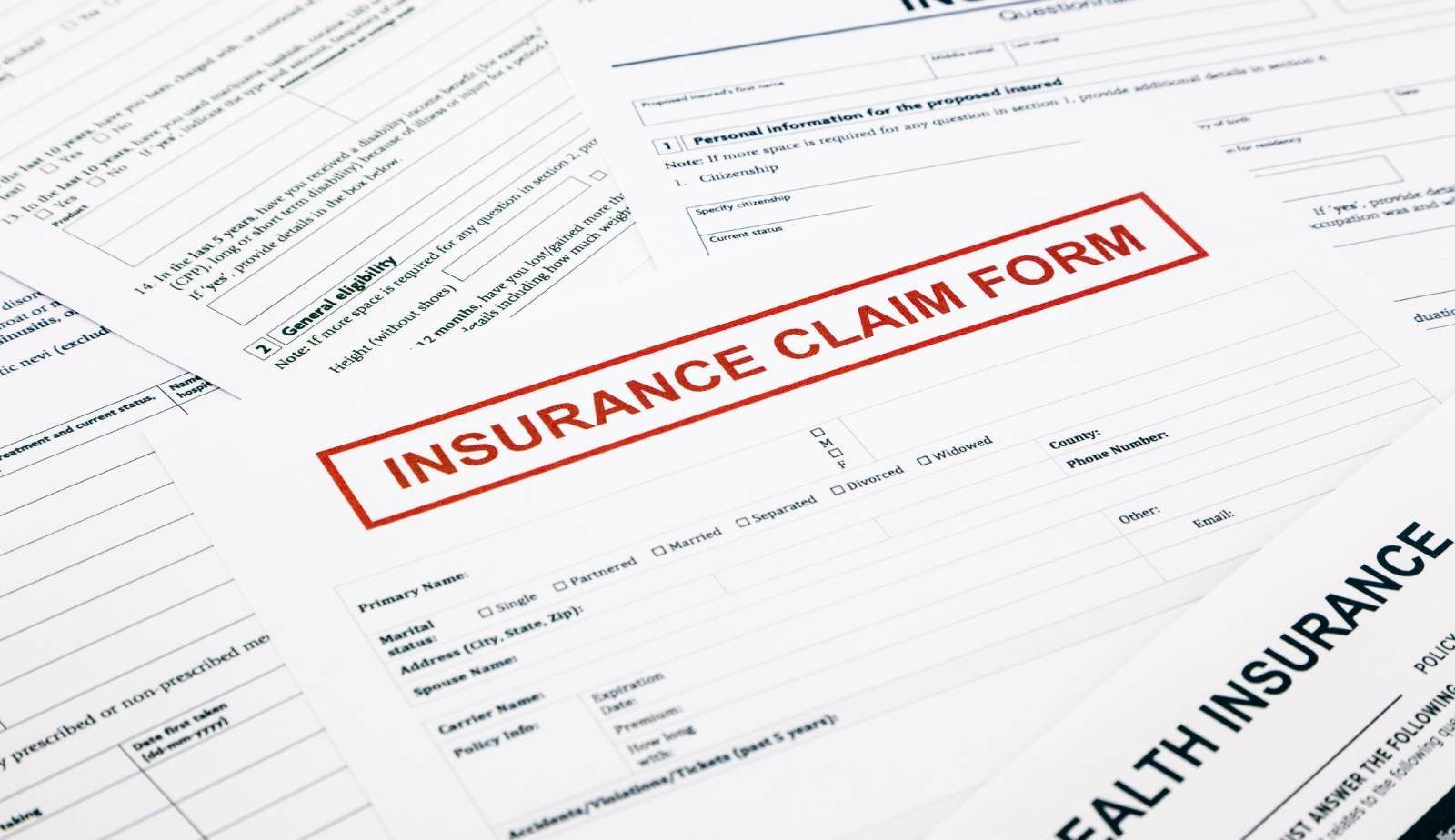
Navigating the complexities of fire and water damage claims can be overwhelming for homeowners in Louisiana. From understanding the intricacies of insurance policies to gathering necessary documentation, the process often feels daunting. Drymax specializes in guiding homeowners through these challenges, ensuring they have the support needed to effectively document and file their claims. Accurate and thorough documentation is crucial for a successful claim. Homeowners need to capture all aspects of the damage, including photographs, estimates, and reports from restoration professionals. Drymax provides critical assistance in this area, offering expertise that helps clients present comprehensive information that insurers require for timely processing. Louisiana's unique climate often exacerbates risks associated with both fire and water damage, making the role of a knowledgeable partner even more vital. With Drymax's commitment to excellence, homeowners can feel assured that they have access to the resources and guidance needed for navigating the insurance claims process confidently. Why Documentation Matters in Fire & Water Claims Accurate documentation is crucial for Louisiana homeowners navigating fire and water claims. It serves as the foundation for successful insurance claims, aiding in the assessment of damage and the determination of compensation amounts. Proper records can mitigate disputes and facilitate a smoother claim process. The Importance of Accurate Records Detailed documentation is essential when filing insurance claims after fire or water damage. Accurately recording the extent of damage helps establish the legitimacy of claims. Homeowners should photograph affected areas, keep invoices for repairs, and maintain records of communications with their insurance company. Comprehensive documentation also supports claims regarding personal property loss. Items lost or damaged can be itemized and valued, ensuring that homeowners receive fair compensation. Moreover, timely documentation prevents issues related to delays in claim processing. Early records are invaluable before any repairs or cleaning occur, preserving evidence of the damage. Common Documentation Mistakes Many homeowners make critical mistakes when documenting damage, which can jeopardize their claims. One common error is failing to take sufficient photographs. Images should show clear views of the damage and include timestamps for validity. Another mistake is not keeping a detailed inventory of damaged items. Homeowners often overlook small, yet valuable possessions, leading to unclaimed losses. It’s vital to record purchase dates and values for all affected property. Miscommunication with insurers is also prevalent. Homeowners may neglect to follow up on claim status or fail to respond promptly to requests for additional documentation. Staying organized and proactive can prevent these pitfalls. Benefits of Professional Assistance Engaging professionals like Drymax offers significant advantages for documenting fire and water damage claims. Experts understand the nuances of insurance requirements and can help homeowners navigate the complexities of the claims process . Professional documentation services ensure comprehensive records are created, reducing the burden on homeowners. They are trained to capture critical evidence and provide clear, thorough inventories of affected items. Additionally, experts can handle communications with insurance companies, ensuring that all deadlines are met and documentation is submitted correctly. This support can substantially improve the likelihood of receiving fair compensation for losses. How Drymax Supports Louisiana Homeowners During the Claims Process Navigating the claims process after fire or water damage can be overwhelming for homeowners. Drymax provides essential support at every step, ensuring that clients receive the assistance they need to document damage accurately and communicate effectively with insurance companies. Initial Assessment and Safety Evaluation The process begins with an initial assessment conducted by Drymax's certified restoration experts. They prioritize safety by evaluating the property for hazards such as structural damage or mold growth. This assessment outlines immediate risks to the homeowner and identifies areas needing urgent attention. Drymax's team documents the conditions through photographs and detailed notes. This information lays the groundwork for determining the scope of repairs. By ensuring safety first, Drymax helps homeowners feel secure before any remediation begins. Detailed Damage Reporting After the initial assessment, Drymax compiles a comprehensive damage report. This report is crucial for supporting homeowners' claims with their insurance. It includes quantitative data on the extent of damage and qualitative descriptions regarding the causes of the loss. Drymax uses advanced techniques to catalog damage, capturing the necessary details to foster transparency with insurance adjusters. Homeowners receive a copy of this documentation, empowering them during the claims process. Detailed reporting can accelerate claims processing and serve as evidence should disputes arise. Communicating With Insurance Adjusters Effective communication with insurance adjusters is vital for homeowners. Drymax assists in facilitating these discussions, ensuring that all pertinent information is correctly relayed to insurance companies. The restoration team leverages their expertise to clarify technical terms and processes, making it easier for adjusters to understand the specifics. If needed, Drymax can also involve a public adjuster to advocate on behalf of the homeowner. This approach enhances the likelihood of a fair settlement, ensuring that all claims are handled professionally and efficiently.
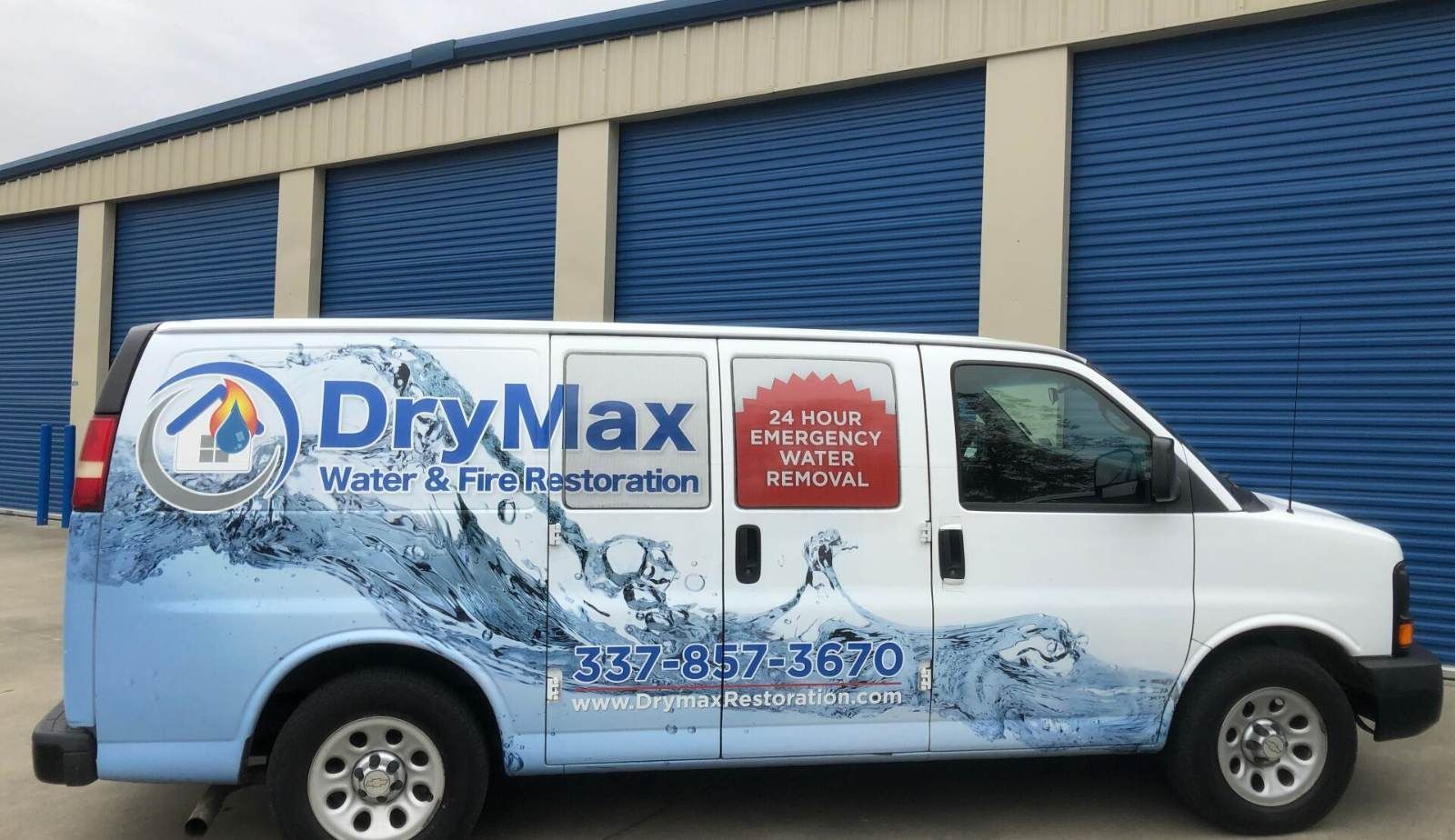
When disaster strikes due to water or fire damage, swift action becomes crucial. Drymax offers 24/7 emergency response services across Louisiana, ensuring that help is always just a phone call away. Their team is dedicated to minimizing damage and restoring properties to their original condition quickly and efficiently. Residents and business owners can expect immediate assistance and a guaranteed 60-minute response time when they reach out to Drymax. With certified professionals and the latest technology at their disposal, they provide specialized services tailored to various situations, from water extraction to smoke odor removal. Drymax’s commitment to customer satisfaction makes them a reliable choice during emergencies. Choosing Drymax means having access to not only timely intervention but also comprehensive solutions designed to ease the stress of recovery. From free inspections to direct insurance billing, they streamline the restoration process to help clients get back on their feet as soon as possible. Understanding Drymax’s 24/7 Emergency Response in Louisiana Drymax offers comprehensive emergency response services for water and fire damage across Louisiana, ensuring prompt assistance whenever disaster strikes. The following sections detail the restoration services available, the scope of 24/7 availability, and what clients can expect after making contact. Overview of Restoration Services Drymax specializes in emergency restoration services, addressing various needs such as water damage, fire damage, and mold remediation. Their trained technicians utilize advanced equipment to perform thorough inspections and effective cleanup processes. Key services include: Water Damage Restoration: Quick extraction of water, drying, and dehumidification. Fire Damage Cleanup: Removal of soot, smoke odor elimination, and rebuilding structures impacted by fire. Mold Remediation: Safe removal of mold and preventative measures to protect properties. These services cater to both residential and commercial properties, aiming to restore environments to their pre-incident condition. Scope of 24/7 Availability Drymax is committed to being accessible around the clock. They guarantee a rapid 60-minute response time, ensuring that no client is left waiting during a crisis. Their dedicated team is always ready to tackle emergencies caused by: Water leaks or flooding Fire incidents Storm damage This constant availability allows Drymax to effectively mitigate damages, reduce recovery time, and prevent further complications. Clients can reach out anytime, knowing they will receive timely and efficient service.
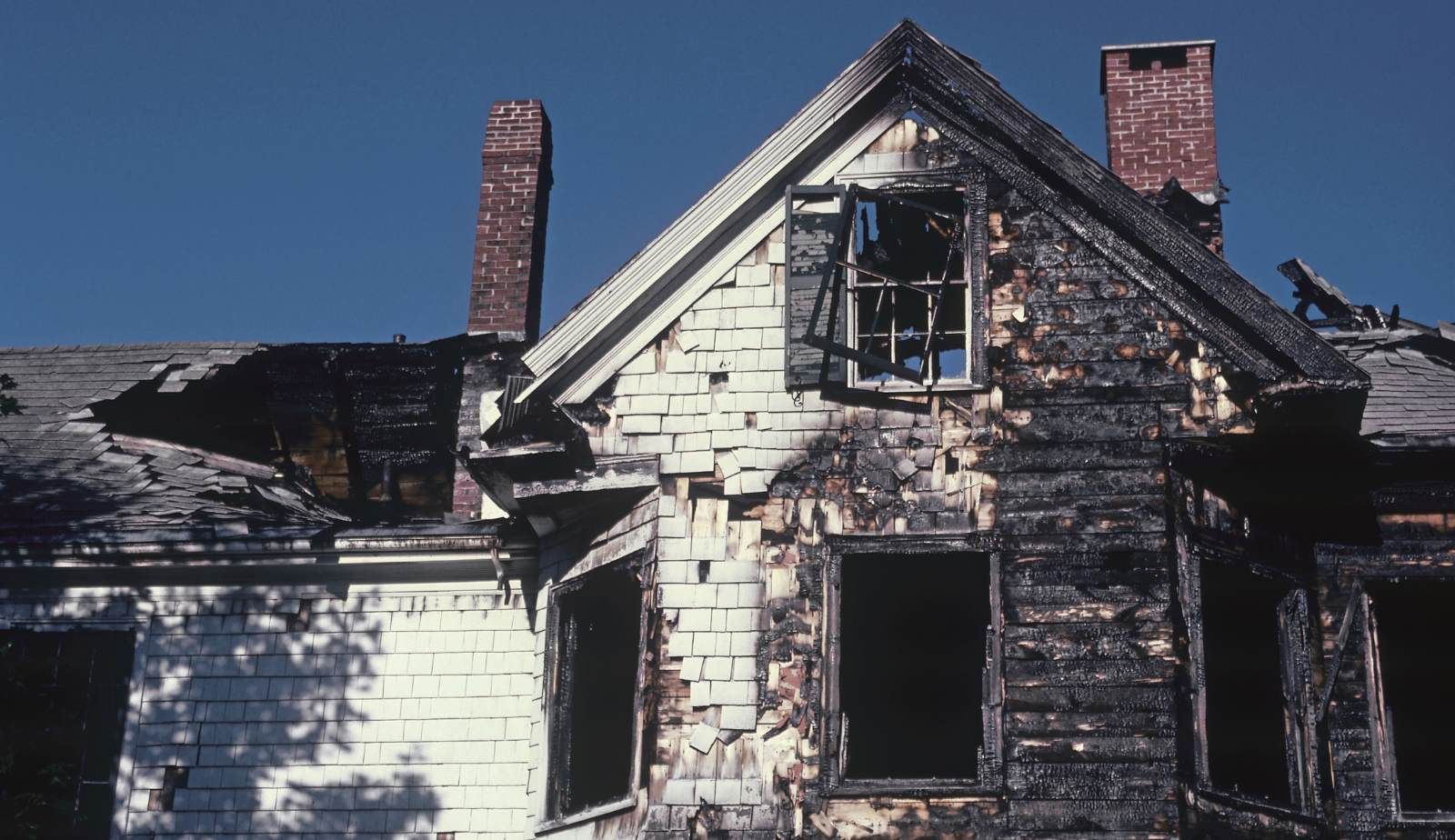
Devastating fires can leave homeowners feeling overwhelmed and uncertain about the restoration process. In Louisiana, DryMax specializes in transforming fire-damaged homes back to their original state. Their comprehensive approach includes advanced techniques for cleaning, repairing, and restoring properties affected by smoke and fire. With a team of trained and certified technicians, DryMax has built a strong reputation over years of service in the Acadiana area. They understand the specific challenges posed by local building materials, which may react differently to fire and moisture. By employing specialized methods tailored to these conditions, they ensure effective restoration that traditional approaches might overlook. For those dealing with the aftermath of a fire, engaging with a professional restoration service is crucial. DryMax provides 24/7 emergency response and a commitment to quality that can significantly alleviate stress and expedite recovery. This level of service helps homeowners reclaim their living spaces efficiently and effectively. Understanding the Challenges of Fire Damage in Louisiana Fire damage restoration in Louisiana involves navigating several complexities due to environmental and structural factors. The combined effects of fire, smoke, and the unique climatic conditions create specific restoration challenges that must be addressed efficiently. Effects of Fire and Smoke on Homes Fire can inflict severe damage to various home components, including walls, ceilings, and personal belongings. The flames can cause charring and burn marks, while the accompanying smoke permeates materials, leaving behind unpleasant odors and soot. Smoke damage is often insidious, affecting areas that may not be directly visible. Key Aspects of Smoke Damage : Odor: Smoke leaves behind strong odors that can persist long after the fire is extinguished. Soot: This residue can damage surfaces and become airborne, settling in hard-to-reach locations. Heat: High temperatures can warp structural elements, weakening the home's integrity. Addressing these effects swiftly is essential to minimize long-term damage. Unique Risks from Humidity and Storms Louisiana's high humidity and frequent storms pose additional challenges during fire damage restoration. The humidity can make it difficult for materials to dry out completely, increasing the risk of mold growth . This factor complicates recovery efforts, as restoration teams must account for pre-existing moisture issues . Considerations : Mold Growth: Damp conditions encourage the development of mold, which can exacerbate health risks. Storm-Related Damage: Fire incidents may occur during storms, creating compounded damage that requires specialized tactics for restoration. Moisture Management: Restoration processes must include effective drying techniques to prevent further deterioration. The local climate necessitates tailored strategies that integrate both fire and water damage restoration. Common Structural and Material Damage Fire not only affects visible surfaces but also compromises the structural integrity of a home. Common areas of concern include: Wood Structures: Burning can weaken beams and joists, posing safety hazards. Insulation: Fire damage may render insulation ineffective or removed during firefighting efforts. Electrical Systems: Exposed wiring from heat can create potential fire hazards if not assessed and repaired properly. Identifying Damage : Professionals conduct thorough inspections to evaluate the extent of damage. Creating a comprehensive list of affected areas helps guide the restoration process and prioritize urgent repairs. Addressing these structural and material concerns is crucial for ensuring the safety and longevity of fire-damaged properties. How Drymax Assesses Fire Damage Drymax employs a systematic approach to evaluate fire damage, ensuring comprehensive assessments that set the stage for effective restoration. This process is vital for determining the extent of damage and formulating a targeted recovery plan. Initial Inspection and Safety Evaluation The assessment begins with an initial inspection of the affected property. Technicians from Drymax evaluate structural integrity and identify any potential hazards, such as unstable walls or electrical risks. Safety is paramount during this phase, and they ensure that the environment is secure before proceeding. This evaluation helps them identify areas requiring immediate attention and formulate a brief overview of damage types, such as: Structural damage Smoke and soot damage Water damage from firefighting efforts Damage Documentation and Reporting Following the safety evaluation, Drymax documents all findings in a detailed report. This includes photographs, notes on damage severity, and a list of affected materials and structures. The documentation serves multiple purposes: It helps in developing an accurate restoration strategy. It is often required for insurance claims. Their experts use specialized software to create comprehensive damage reports, ensuring no detail is overlooked. This thorough documentation lays the foundation for transparent communication with homeowners and insurance adjusters alike. Customized Restoration Planning Armed with inspection data and damage reports, Drymax develops a customized restoration plan. Each plan is tailored to the specific needs of the property and the unique circumstances of the fire incident. This planning stage considers: The type of materials affected The necessary equipment for restoration Expected timelines for each phase of work Stakeholder input, including feedback from the homeowner, is valued, ensuring that all parties understand the planned approach. This meticulous planning establishes a clear path toward restoring the home to its pre-loss condition efficiently and effectively.
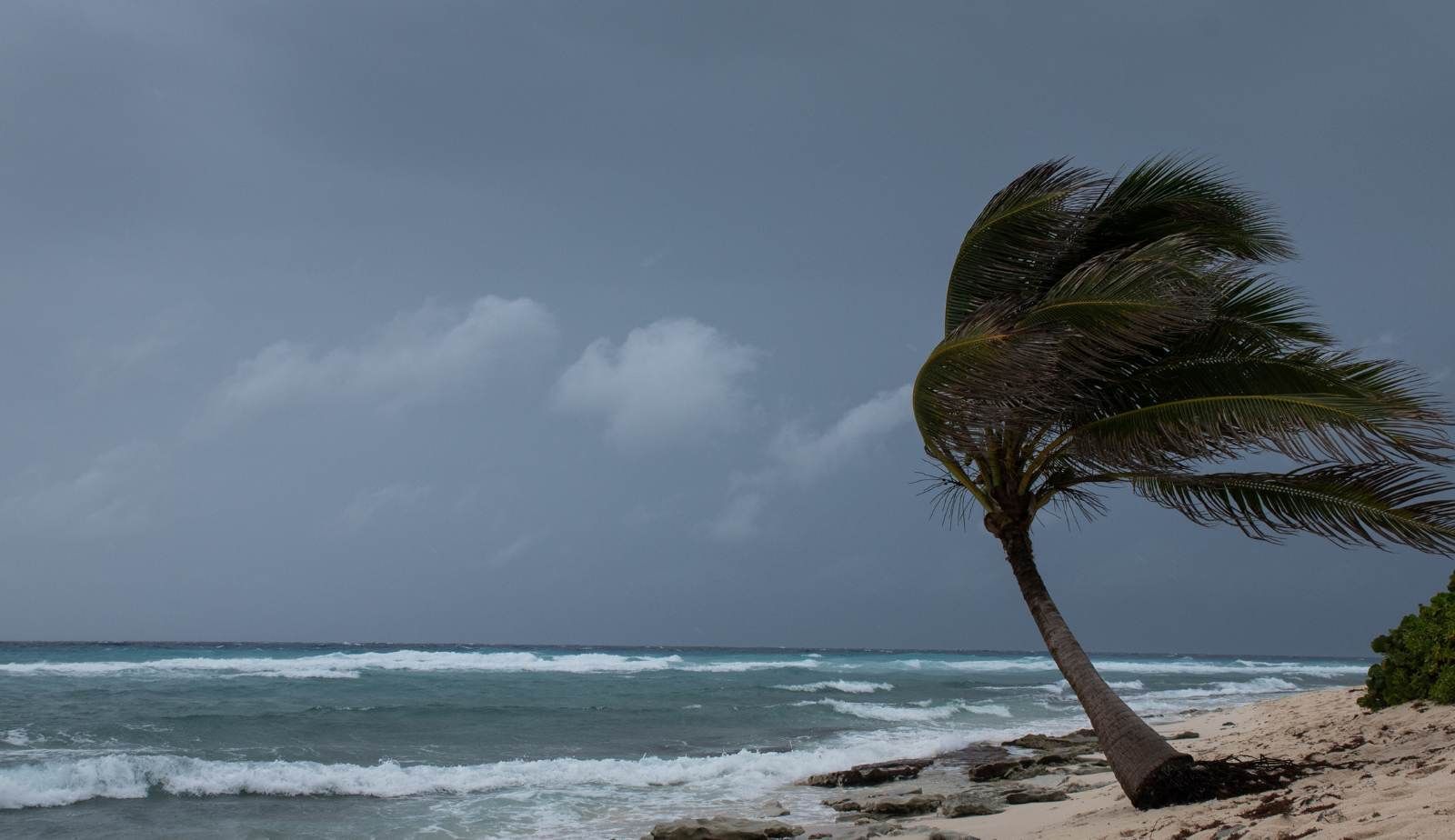
As hurricane season approaches, homeowners in Louisiana must assess their preparedness for potentially severe weather events. A proactive approach can significantly reduce damage and enhance safety during storms. It is essential for residents to review their emergency plans , secure their property, and ensure they have necessary supplies at the ready. Knowing that hurricanes can impact the region with high winds, flooding, and power outages, it's crucial to take actionable steps to protect one's home. This includes checking insurance coverage , reinforcing structures, and being aware of evacuation routes. Following expert advice, like that from Drymax, can make a difference in how well a home withstands the challenges of hurricane season. The changing climate patterns suggest that storms may become more intense, making careful preparation even more critical. Engaging in thorough planning now will provide homeowners with peace of mind as they face the Atlantic storms that frequent their area each year. Assessing Hurricane Risks for Louisiana Homes Evaluating hurricane risks is crucial for homeowners in Louisiana, given the state's vulnerability to powerful storms. Understanding the categories of hurricanes and analyzing past storm activity can help homeowners make informed decisions about preparing their properties. Understanding Hurricane Categories and Damage Potential Hurricanes are classified using the Saffir-Simpson Hurricane Wind Scale, which ranges from Category 1 to Category 5. Each category indicates the potential wind speed and associated damage: Category 1 : Winds of 74-95 mph; minimal damage primarily to unanchored mobile homes and trees. Category 2 : Winds of 96-110 mph; significant roof damage and possible power outages. Category 3 : Winds of 111-129 mph; devastating damage occurs to homes, with most trees uprooted. Category 4 : Winds of 130-156 mph; severe damage; most of the area will be uninhabitable for weeks or months. Category 5 : Winds exceeding 157 mph; catastrophic damage; total destruction of many buildings. Knowing the specific category risks helps homeowners implement appropriate precautionary measures and insurance coverage. Historical Hurricane Activity in Louisiana Louisiana has a long history of severe hurricanes affecting its residents. Notable storms include Hurricane Katrina in 2005 and Hurricane Ida in 2021. The impacts of these hurricanes involved widespread flooding , power outages, and massive property damage. From June 1 to November 30, Louisiana faces the heightened risk of hurricanes. Homeowners should assess their properties based on historical data, considering factors such as: Proximity to water bodies Elevation levels The sturdiness of home construction Researching local history and patterns can guide residents in making proactive decisions concerning hurricane preparedness and safety. Understanding past events allows for better future planning. Insurance Coverage Essentials for Hurricane Season For homeowners in Louisiana, preparing for hurricane season includes a thorough examination of insurance coverage. Adequate protection against storm damage is essential for safeguarding homes and financial stability. Reviewing Homeowners Insurance Policies Homeowners in Louisiana should carefully evaluate their homeowners insurance policies before hurricane season. Policies typically cover damage from wind and debris, but many do not include flooding, which is a significant risk during hurricanes. Key considerations include: Coverage for Additional Structures : Ensure that structures like garages and sheds are included. Personal Property Protection : Check if personal belongings, such as furniture and electronics, are adequately covered. It's advisable to consult with an insurance agent to verify policy details and make any necessary adjustments. This proactive approach can prevent unpleasant surprises in the event of a storm. Flood Insurance Considerations Flood insurance is often separate from standard homeowners policies. It is vital for homeowners in Louisiana to secure additional flood coverage given the state's vulnerability to heavy rains and storm surges. Important facts to know include: Policy Activation : There is typically a 30-day waiting period for flood insurance . National Flood Insurance Program (NFIP) : Homeowners can obtain flood insurance through the NFIP, which may offer subsidized rates. Understanding the specifics of flood insurance coverage, including what perils are covered, is critical to comprehensive protection. Understanding Deductibles and Coverage Limits Homeowners should also familiarize themselves with policy deductibles and coverage limits . Deductibles determine how much out-of-pocket expense is needed before the insurance coverage begins. Consider these factors: Higher Deductibles : Choosing a higher deductible can lower monthly premiums but increases costs during a claim. Coverage Limits : Know the maximum amount the insurer will pay for damages. It is essential to ensure these limits meet the potential costs of hurricane-related damages. Reviewing and adjusting deductibles and limits can tailor coverage to individual financial situations and risk exposures. This step is critical for adequate hurricane preparedness.
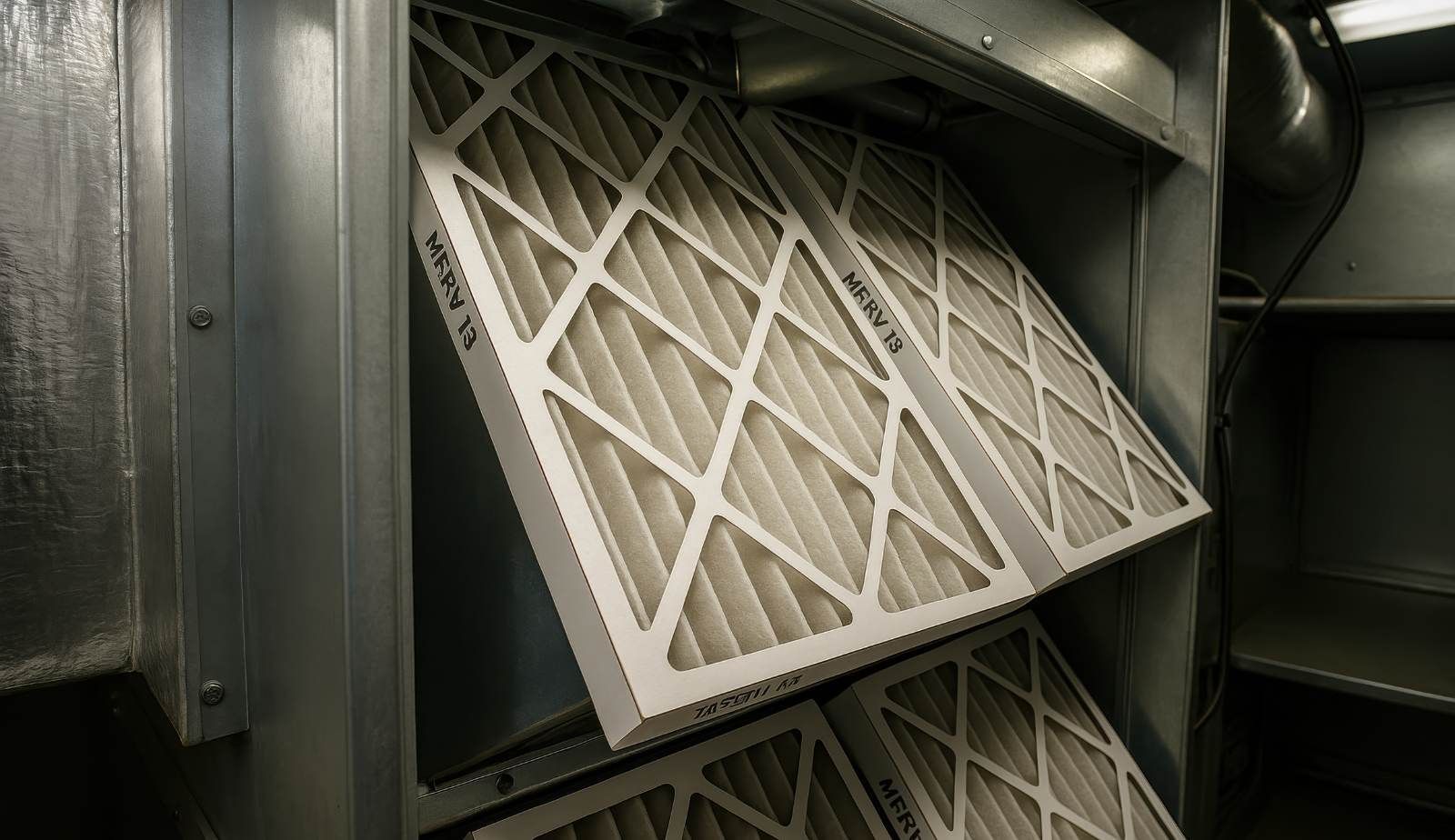
Smoke damage poses significant threats to a home’s air quality, often lingering long after the flames have been extinguished. When a fire occurs, harmful particles and volatile organic compounds (VOCs) are released into the air, compromising both the comfort and safety of the living environment. Effective remediation is crucial to ensure clean and healthy air, which is essential for the well-being of residents. Soot and smoke particles can infiltrate HVAC systems, contaminating the air that circulates throughout the home. These pollutants are not only difficult to remove but can also lead to respiratory issues and other health concerns over time. Understanding the full extent of smoke damage is key to addressing these hidden hazards and restoring air quality to a safe level. Fortunately, specialized restoration services, like Drymax Louisiana, are equipped to tackle the challenges posed by smoke damage. With advanced techniques and thorough cleaning methods, they focus on both visible and invisible damage, helping homeowners regain a safe and comfortable indoor environment. How Smoke Damage Impacts Your Home’s Air Quality Smoke damage can severely impact indoor air quality , introducing harmful particles and persistent odors into a living space. Understanding how these elements penetrate the home is crucial for effective remediation and maintaining a healthy environment. Penetration of Smoke Particles and Odors Smoke consists of fine particles that can remain suspended in the air for extended periods. These particles, often classified as PM2.5, can penetrate deep into the lungs when inhaled. Smoke also carries a variety of volatile organic compounds (VOCs) that contribute to persistent odors. Once smoke particles settle on surfaces, they release toxins over time, impacting air quality. Common areas affected include: Walls and Ceilings : Smoke damage can create visible stains, but the more significant issue is the residual odor. Fabrics and Upholstery : Curtains, carpets, and furniture can absorb smoke particles, making odor removal challenging. Effects on Indoor Air Quality The presence of smoke and its byproducts can lead to various health issues. Indoor air quality deteriorates when smoke chemicals such as carbon monoxide, formaldehyde, and benzene infiltrate the air. These substances can cause respiratory irritation and exacerbate pre-existing conditions like asthma. Effects to be aware of include: Chronic Coughing : Prolonged exposure can lead to persistent respiratory problems. Allergic Reactions : Smoke can exacerbate allergies, causing symptoms such as sneezing and eye irritation. Monitoring indoor air quality becomes essential after any incident involving smoke to prevent health risks. Air Circulation and Smoke Spread Air circulation plays a critical role in how smoke spreads throughout a home. HVAC systems can inadvertently transport smoke particles from one room to another, amplifying the problem. When smoke enters the ducts, it can cling to surfaces, releasing odors even long after the initial incident. Proper air filtration becomes crucial in managing this. To improve air quality, consider: Replacing HVAC Filters : This prevents recirculation of contaminated air. Using Air Purifiers : High-quality purifiers can capture fine smoke particles, aiding in clean air restoration. Taking these steps can help minimize the longstanding impacts of smoke damage on indoor air quality. Types of Smoke Damage and Their Effects Understanding the different types of smoke damage is crucial. Each type can affect the air quality in a home significantly, with specific challenges associated with their residues. Dry Smoke vs. Wet Smoke Dry smoke typically results from high-temperature fires involving materials like paper and wood. This type produces a fine, powdery residue that can easily infiltrate small crevices. Its removal is often less complex, as it tends to respond well to vacuuming and specialized cleaning agents. In contrast, wet smoke arises from low-temperature, smoldering fires, frequently involving plastics. This produces a sticky, smeary residue that is more challenging to clean. The strong, lingering odors associated with wet smoke can also permeate furniture and fabrics, complicating the restoration process. Understanding these differences informs appropriate cleanup methods . Smoke Residue and Its Challenges Smoke residue is not only unsightly but also can pose health risks. There are various types of residues, including dry, wet, and protein residues from cooking fires. Each type interacts differently with surfaces and can lead to long-term damage. Residues can etch glass, tarnish metal, and discolor paint. For example, acidic soot particles can corrode metals and fabrics over time. Removing these residues is essential for maintaining indoor air quality. Specialized cleaning solutions and techniques may be necessary to effectively neutralize these residues and restore affected areas. Impact of Different Smoke Sources The source of smoke directly influences the type of damage experienced. For instance, kitchen fires typically produce protein smoke, which creates odors that linger for extended periods. This type of smoke may not visibly mark surfaces but can severely compromise air quality. Fires involving synthetic materials often lead to wet smoke, which can emit toxic fumes. These may pose significant health risks and necessitate highly specialized cleaning techniques. Knowing the source of smoke helps in choosing the appropriate remediation strategy. A tailored approach ensures that air quality is restored effectively, allowing occupants to return to a safe environment.
Water damage is a common issue in Louisiana homes, often resulting from leaks or heavy rainfall. Many homeowners mistakenly believe that drying visible water is sufficient to prevent further damage. However, it’s crucial to address hidden moisture to avoid costly repairs and potential mold growth . Louisiana’s high humidity levels make homes particularly susceptible to ongoing moisture problems, posing risks that extend beyond the initial leak. Effective water removal involves comprehensive drying and proper ventilation to safeguard the structural integrity of the home. Neglecting these factors can lead to more significant issues down the line, including health concerns related to mold. Drymax emphasizes the importance of professional inspection and drying techniques. Simply removing surface water is not enough; a thorough approach is necessary to ensure that homes remain safe and structurally sound after a leak. Understanding these key elements can make all the difference in maintaining a healthy living environment. Why Drying Alone Falls Short After Water Leaks Drying out a home after a water leak is an essential step, but it often does not address the complexities of water damage. There are significant risks associated with hidden moisture, incomplete drying, and overlooked secondary damages that can lead to long-term issues. Hidden Moisture Risks After a leak, not all moisture is visible. Water can become trapped behind walls, beneath floors, or inside insulation. This hidden moisture can create a breeding ground for mold and mildew, which may take weeks or months to fully develop. Using a moisture meter can help locate these areas, but many homeowners do not take this step. If moisture levels remain high, they risk ongoing damage to the home’s structure and health issues due to air quality deterioration. Dangers of Incomplete Drying Even if the surface appears dry, the drying process might be incomplete. Incomplete drying allows moisture to linger, posing significant risks. Factors such as humidity, temperature, and air circulation impact the drying duration. Delaying professional intervention can exacerbate these risks. This situation can lead to structural damage, requiring costly repairs later. Overlooked Secondary Damages Secondary damages often arise from untreated water leaks . Apart from mold, issues like wood rot and corrosion can silently progress. Wood can warp or weaken, compromising structural integrity . Insulation may lose its effectiveness, increasing energy costs. Homeowners frequently overlook these problems as they focus solely on drying out visible areas, not realizing that potential damage is still occurring out of sight. Taking a comprehensive approach post-leak is crucial to ensure the home remains safe and sound. Unique Water Damage Challenges in Louisiana Homes Louisiana homes face specific water damage challenges primarily due to the region's high humidity, common leak sources , and unique climatic conditions . These factors contribute to a higher risk of structural damage and health hazards within residences. Impact of High Humidity Levels High humidity levels in Louisiana are a significant contributor to water damage. When humidity is consistently above 60%, indoor moisture can promote mold growth, mildew, and other dangerous conditions. This damp environment can lead to condensation on colder surfaces, which can further exacerbate existing leaks. Homeowners might notice increasing problems with paint peeling or wall discoloration . To mitigate these risks, maintaining indoor humidity levels through ventilation and dehumidifiers is crucial. Regular checks on HVAC systems can also help manage moisture, reducing potential damage. Common Leak Sources: Burst Pipes, Roof Leaks, and Sewage Backup In Louisiana, burst pipes, roof leaks, and sewage backups are frequent sources of water damage. Aging plumbing systems are often vulnerable to temperature fluctuations that cause pipes to expand and burst, leading to rapid water accumulation. Roof leaks, especially post-storm or hurricane, create entry points for rainwater, potentially saturating insulation and ceilings. Sewage backups can arise from heavy rainfall overwhelming drainage systems , introducing hazardous waste into homes. To address these issues, routine inspections of plumbing and roofing, particularly after severe weather, are essential. Homeowners should also be familiar with their home's drainage system to quickly identify and mitigate backups. Climate and Structural Vulnerabilities Louisiana's climate contributes to its unique water damage challenges. Frequent rain, tropical storms, and hurricanes can quickly raise the water table, saturating the soil around homes. This saturation can lead to unintended foundation shifts and structural issues such as cracked walls and uneven flooring . Additionally, many homes are built on or near flood-prone areas, increasing vulnerability. Using water-resistant building materials and proper drainage solutions can lessen these risks. Homeowners should prioritize maintaining clear gutters and downspouts to direct water away from the foundation, thus minimizing structural vulnerabilities. Unseen Threats: Mold Growth and Structural Issues In Louisiana homes, moisture from leaks can lead to significant hidden challenges beyond visible damage. Mold growth, structural damage, and compromised indoor air quality can develop stealthily, necessitating immediate attention. Rapid Mold and Mildew Development Mold and mildew flourish in humid environments, making Louisiana an ideal breeding ground. Once a leak occurs, mold can begin growing within 24 to 48 hours if the area is not adequately dried. Mold reproduces through spores that become airborne, which can settle on wet surfaces and create colonies. Key indicators of mold presence include: Musty odors Visible patches Paint bubbling or peeling Recognizing these signs early is essential to contain the growth before it spreads more extensively. Structural Damage to Walls and Floors Moisture from leaks can lead to significant structural damage, particularly in walls and floors. Mold feeds on organic materials like wood, compromising the integrity of floor joists and framing. Warped floors and visibly damaged walls can indicate deeper issues. Common structural problems include: Weakened joists Crumbling drywall Compromised ceilings These issues can escalate costs for repairs if left unchecked, making swift remediation crucial. Long-Term Consequences on Indoor Air Quality Mold growth has detrimental effects on indoor air quality, impacting the health of occupants. Mold spores and their byproducts can trigger allergic reactions and respiratory issues. Individuals with existing health conditions, such as asthma, may experience exacerbated symptoms when exposed to mold. In addition, mold can produce mycotoxins , which can lead to long-term health complications if inhaled regularly. Maintaining good air quality involves not only addressing existing mold but also preventing future growth through proper moisture control. Identifying Warped Floors and Other Damage Warped floors are often a clear sign of moisture problems in a home. Homeowners should regularly inspect their flooring for signs of: Bowing Buckling Soft spots These indicators suggest water damage that could lead to more serious issues like collapse or severe mold infestation. Visual inspections, coupled with moisture meters, can help detect underlying problems early. Addressing these concerns immediately can save homeowners from costly repairs and potential health risks associated with mold growth.
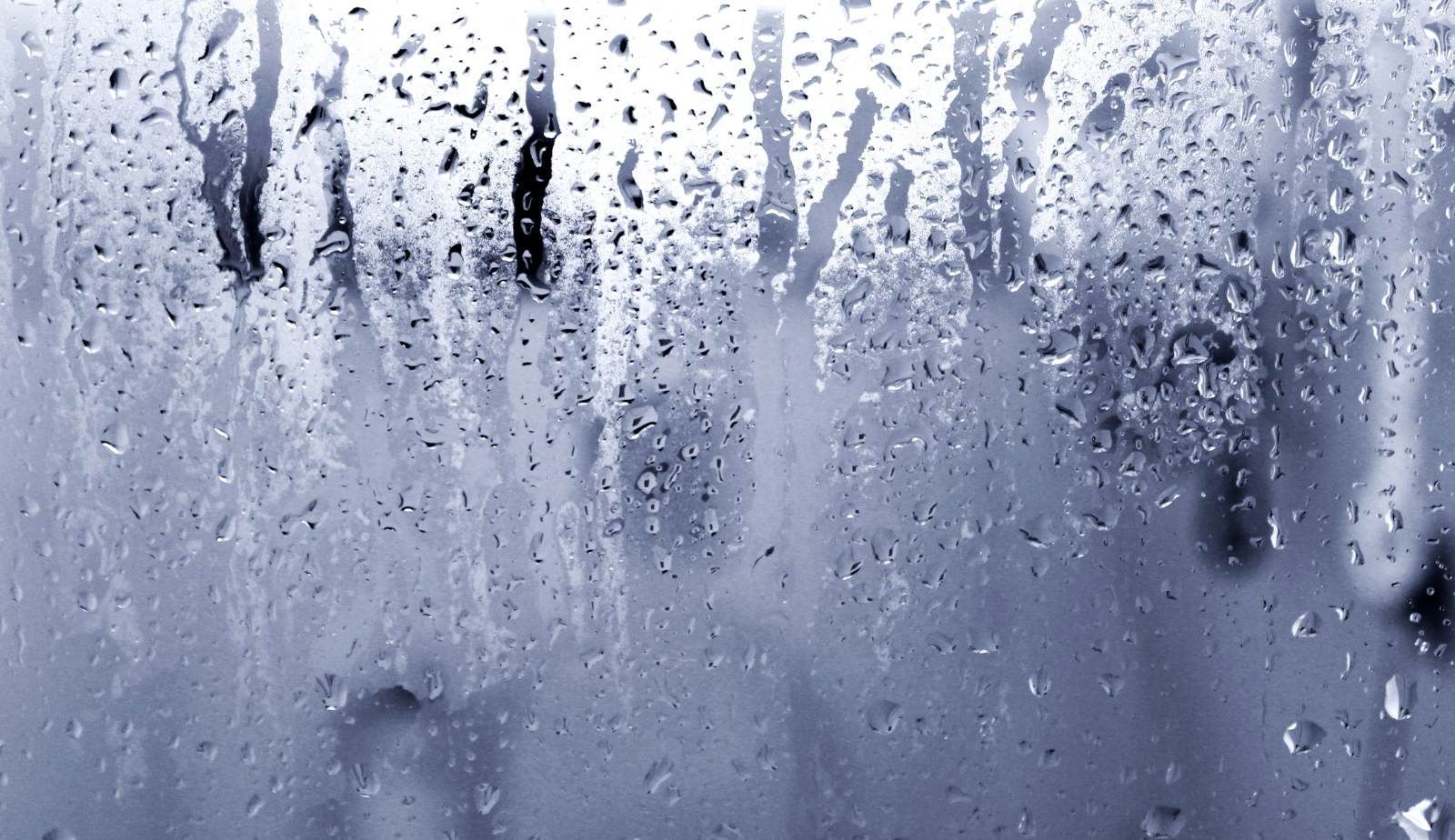
Homes in humid climates like Louisiana face unique challenges when it comes to water leaks and moisture damage. High humidity levels increase the risk of leaks, mold, and structural problems, making regular maintenance essential to protect a property’s value and safety. Understanding effective strategies to prevent water infiltration can save homeowners time and costly repairs. The key to preventing water leaks in humid environments is a combination of sealing cracks, maintaining gutters, and controlling indoor humidity through proper ventilation and dehumidification. This approach reduces the chances of water damage and limits mold growth , which thrives in damp conditions. Routine inspections and upkeep of roofing, windows, and drainage systems are critical steps. By addressing small issues early on, homeowners can avoid major leaks and deterioration caused by prolonged exposure to moisture. Understanding Water Leaks in Humid Climates Water leaks in humid climates often arise from the interaction of moisture with building materials and home infrastructure. High indoor humidity encourages condensation, structural decay, and mold growth, all of which can lead to water intrusion . Louisiana's unique climate presents specific factors that must be addressed to reduce leak risks effectively. How Humidity Contributes to Water Intrusion Humidity causes excess moisture to accumulate on surfaces and inside walls when warm, moist air meets cooler building materials. This condensation can deteriorate wood, corrode metal pipes, and weaken seals around windows and doors. Indoor humidity levels above 50% increase the likelihood of mold and mildew, which thrive in moist environments and can worsen structural damage. Using dehumidifiers and maintaining air conditioning are critical steps to keep humidity in check and minimize water intrusion risks. Moisture also promotes material expansion and contraction, creating cracks and gaps that water can enter and accumulate. Preventative measures include sealing leaks and improving ventilation to reduce trapped moisture. Specific Challenges in Louisiana Homes Louisiana’s hot, humid climate with frequent rain and storms amplifies moisture problems in homes. The combination of high humidity and heavy rainfall leads to increased chances of roof leaks, foundation water intrusion, and plumbing issues. Homes often face challenges such as inadequate ventilation in utility areas, roofs damaged by storms, and older insulation without proper vapor barriers. Foam insulation with vapor barriers is recommended over traditional fiberglass to limit moisture migration inside wall cavities. Regular maintenance like cleaning gutters and downspouts ensures proper water drainage away from the home. Inspecting for cracks around windows, doors, and the foundation, then sealing them promptly, helps prevent water intrusion caused by the state’s climate. Signs of Developing Water Leaks Identifying early signs of water leaks prevents costly damage. Common indicators include: Discolored or peeling paint on walls or ceilings Musty odors signaling mold or mildew growth Warped or soft flooring , often caused by prolonged moisture exposure Visible condensation on pipes or windows, especially in closed spaces Dripping sounds or unexplained increases in water bills Homeowners should also watch for stains near plumbing fixtures and cracks in the foundation or walls . Regular inspection combined with humidity control can detect leaks before they develop into serious problems. Fundamental Maintenance Practices to Prevent Water Leaks Preventing water leaks in humid climates requires targeted inspections and timely repairs. Homeowners should focus on detailed checklists , prioritize key vulnerable areas , and address any issues immediately to avoid further damage. Routine Inspection Checklists A thorough inspection involves checking roofs, gutters, plumbing, and HVAC units regularly. Look for signs like discoloration, drips, or mold growth around ceilings and walls. Ensure gutters and downspouts are clear from debris to prevent water overflow. Pipes, especially those exposed or in unheated spaces, need inspection for cracks or corrosion. Flushing the water heater annually helps reduce sediment buildup that can cause leaks. Using leak detection devices can alert homeowners to hidden or early-stage leaks before they escalate. Critical Areas Needing Regular Monitoring The roof is a primary concern due to constant exposure to rain and humidity. Inspect shingles for damage or wear, and check flashing around chimneys and vents. Window and door seals must be intact; gaps allow moisture penetration and increase leak risk. Basements and foundations require attention, especially in Louisiana’s flood-prone regions. Look for cracks or pooling water near the foundation. HVAC systems are vulnerable to condensation issues; regular inspection of drains and drip pans is essential to prevent leaks caused by blockages. Handling Immediate Repairs Once a leak or damage is detected, prompt action is necessary. Small roof leaks should be patched using appropriate sealants and replaced shingles if needed. Caulk gaps around windows and doors to keep moisture out. Damaged pipes must be repaired or replaced quickly to avoid water damage or mold growth. If leaks originate from HVAC units, cleaning or replacing clogged drain lines and pans can prevent overflow. Addressing these issues immediately minimizes structural deterioration and costly repairs.
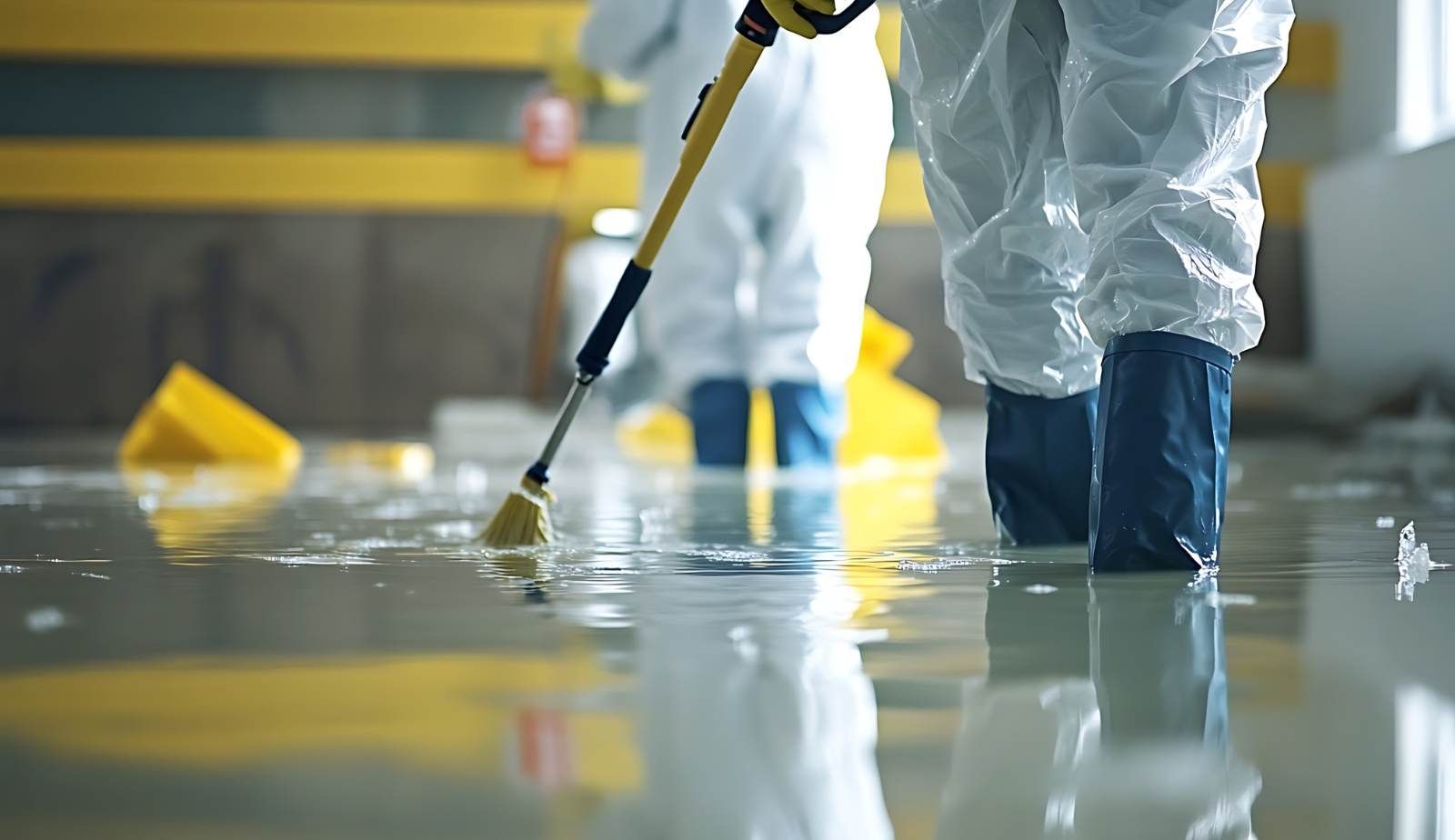
Water damage is a common problem for homeowners in Louisiana, often due to heavy rains and humidity. Many individuals attempt DIY cleanup, thinking they can save time and money. Unfortunately, these efforts can lead to costly mistakes that exacerbate the situation or compromise health and safety. Understanding the common pitfalls in DIY water damage cleanup is crucial for effective restoration. Many homeowners overlook the importance of using appropriate tools and techniques, which can contribute to hidden damage and mold growth. Engaging with insights from industry experts, such as those at Drymax, can provide valuable guidance on how to navigate the challenges of water damage restoration. Awareness of these misconceptions not only helps in effective damage control but also ensures a safer home environment. It becomes essential to address the cleanup process correctly to mitigate risks and reduce long-term costs associated with water damage. Top DIY Water Damage Cleanup Mistakes in Louisiana Homeowners in Louisiana often attempt DIY water damage cleanup to save time and costs. However, several critical mistakes can lead to increased damage and expenses. Understanding these pitfalls helps prevent further complications during restoration efforts. Underestimating the Extent of Water Damage One major mistake is underestimating how extensive the water damage is. Homeowners may assume that visible dampness is only a surface issue. However, water can seep into walls, flooring, and other concealed areas. Taking time for a thorough assessment is essential. Utilizing moisture meters can help identify hidden water pockets. If left untreated, underlying damage can lead to mold growth and structural issues, escalating repair costs significantly. Improper Use of Household Equipment Many turn to household equipment for water cleanup, but improper use can worsen conditions. Common mistakes include using towels or mops instead of appropriate extraction tools. For larger volumes of water, shop vacuums or sump pumps are necessary. Using them incorrectly can lead to prolonged exposure, which fosters mold growth. Proper techniques should follow manufacturers' guidelines to ensure effective removal and minimize damage. Neglecting Hidden Moisture Another frequent error is neglecting hidden moisture areas. Water may accumulate in less visible locations, such as behind drywall, within insulation, or under flooring. These areas can trap moisture long after visible water is removed. Using infrared cameras or professional tools to detect moisture points can prove invaluable. If overlooked, these hidden spots can lead to costly repairs from unseen mold infestations and structural degradation. Inadequate Drying Techniques Finally, inadequate drying techniques pose a significant risk. Many homeowners rely solely on natural ventilation, which may not sufficiently remove moisture. To ensure appropriate drying, utilizing industrial-grade dehumidifiers and fans is recommended. These devices can rapidly reduce humidity levels, promoting effective drying. Regular monitoring of moisture levels throughout the process is essential for preventing future issues. Implementing proper techniques and tools in DIY water damage cleanup will help mitigate risks and reduce overall costs in Louisiana. Reasons DIY Approaches Often Fail Many homeowners consider DIY methods for water damage cleanup. However, these approaches can lead to costly errors due to limited equipment, lack of experience, and incorrect evaluations of the damage. Lack of Professional Tools and Expertise DIY water damage cleanup often falls short because of inadequate tools and training. Professionals use specialized equipment such as industrial-grade dehumidifiers, moisture meters, and thermal imaging cameras. These tools help detect hidden moisture and assess damage accurately. Homeowners, lacking this expertise, may miss critical water intrusion points, leading to persistent moisture and mold growth. Without proper training, individuals are also prone to make mistakes in water extraction and drying processes. Such errors can increase the risk of structural damage and health issues over time. Overlooking Structural Damage Another critical issue with DIY cleanup is the potential oversight of structural damage. Water can compromise foundations, walls, and floors, leading to long-term issues if not properly addressed. Homeowners might not know what signs to look for, like warped floors or stained walls, indicating deeper problems. Failing to evaluate and repair these damages can lead to costly repairs in the future. Professionals conduct comprehensive assessments and ensure all affected materials are treated or replaced, minimizing risks to the property. Incorrect Assessment of Contaminants Identifying the type of water involved is crucial for effective cleanup. Homeowners often fail to correctly assess whether water is clean, gray, or black. This misjudgment can lead to inadequate cleaning methods and increased health risks. For instance, black water, which contains harmful pathogens, requires different treatment than clean water. Using improper procedures based on incorrect assessments exposes individuals to severe health hazards and costly remediation down the line. Professionals are trained to evaluate water type and implement suitable remediation strategies, ensuring a safe environment. Serious Health Risks from Improper Cleanup Improper cleanup following water damage can lead to significant health risks . Key concerns include the rapid growth of mold, bacterial contamination, and long-term respiratory issues. Each of these factors underscores the necessity of professional intervention to ensure a safe living environment. Mold Growth and Air Quality Issues When water damage is not thoroughly cleaned, mold can begin to grow within 24-48 hours. This growth is particularly dangerous in humid environments like Louisiana, where moisture levels are high. Mold spores can become airborne, leading to reduced air quality . Inhalation of these spores can trigger allergic reactions and respiratory issues such as asthma attacks. Common symptoms include: Sneezing Coughing Nasal congestion Skin irritations The presence of toxic mold , like Stachybotrys chartarum (black mold), can exacerbate health problems and contribute to chronic illnesses. Professional remediation is crucial to control moisture and prevent regrowth. Bacterial Contamination Water damage often introduces bacteria from contaminated sources such as sewage or stagnant water. Common pathogens include E. coli and hepatitis A, which can lead to severe gastrointestinal illness. Exposure can occur through direct contact or ingestion of contaminated water. This risk is heightened during DIY cleanup efforts, where proper sanitation measures may be overlooked. Preventive measures include: Wearing gloves and masks Averting skin contact with floodwaters Practicing good hygiene during cleanup Failure to address bacterial contamination can lead to outbreaks of infectious diseases, increasing public health risks within communities. Long-Term Allergies and Respiratory Problems Improper cleanup can contribute to long-term health issues. Prolonged exposure to mold and bacteria may lead to persistent allergies and chronic respiratory conditions. Individuals with pre-existing conditions, like asthma, are particularly vulnerable. The ongoing presence of irritants can result in heightened sensitivity, leading to recurrent respiratory symptoms. Symptoms may worsen with seasonal changes, contributing to long-term health complications. The CDC points out that early intervention is vital for mitigating these risks. Regular air quality assessments and professional remediation can help restore safe living conditions, minimizing long-term health impacts.


